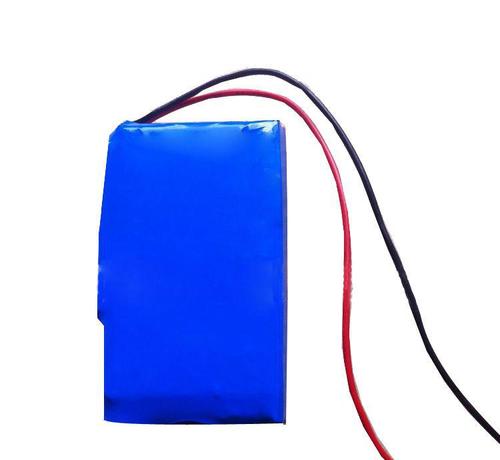Time:2020-12-29 Views:114
The dried polymer lithium battery, additives and auxiliary equipment are taken into the glove box: the transition must be performed for 3 times of air extraction (pumping to <-0.08Mpa or close to its endurance limit, the gas in the glove box should be used for inflation, not directly Use cylinder gas and inflate to the same pressure as the glove box before taking it into the box; Dew point meter and other equipment and items that cannot be dried are taken into the glove box: the transition chamber must be ventilated 3-5 times before taking it In the box;

Electrolyte mixing: The distribution ratio of each group is regulated in accordance with the "Relevant Regulations on Electrolyte Additives", such as 302VB+5%204+4%E means that the weight percentage is 91g:5g:4g.
In the electrolyte mixing container, first add the required amount of electrolyte, add additives, then stir the electrolyte at medium speed with a strong mixer, add the remaining pure electrolyte after 5 minutes, and stir at medium speed for 5 minutes until the electrolyte is evenly mixed ( The exposure time of the electrolyte is controlled at 10±1 minutes), and then the electrolyte is divided into sealed electrolyte bottles through a 120-mesh filter for use; the electrolyte is used to the bottom of the barrel, due to the increase in nitrogen pressure, the electrolyte The dissolved gas in the medium increases, and the gas can be degassed by vacuuming in the vacuum box in the glove box; specific operation: put the divided electrolyte bottle (open the lid) into the vacuum box, close the door, and slowly evacuate to- 0.05MPa, hold for 20 seconds (pay attention to the pumping speed to avoid electrolyte splashing), then slowly deflate to normal pressure, and take out the seal;
The electrolyte barrel outside the glove box should be marked with color, and the marking should be clearly and uniformly: for example, write LB-3165A, LB-302VB;
The additive bucket on the outside of the glove box should be distinguished by a different color from the electrolyte, and it should be clearly marked: such as 204;
The production department must set up a dedicated person to configure the electrolyte, and other people are not allowed to configure the electrolyte at will.
When the additives enter the glove box, they are put into the bottles in the glove box. All the bottles containing the additives must be hung with a sign, distinguished by color, and marked: additive.
Before configuring and using the electrolyte, PQC must confirm on site. After preparing an electrolyte, the production staff and PQC monitoring personnel fill in the "Electrolyte Mixing Record Form" and confirm that it can be produced.
Liquid injection: according to the battery model, inject the specified liquid injection volume. Use 3.5, 12, 20ml Haiba pumps to inject liquid within the allowable error range; when the electrolyte in the liquid container is less, you can use a plastic dropper to manually inject the liquid. After the battery is filled with the electrolyte, Put it in the glove box for more than 10 minutes (according to the last battery filled) and then vacuum;
Evacuate after liquid injection: Slowly evacuate to -0.06MPa in 2 times (in the first stage, evacuate to -0.02MPa in 20±2 seconds, hold it for 4±1 seconds, and then exhaust gas in 13-15 seconds; second In the stage, it takes 40±2 seconds to pump to -0.06MPa, and hold for 4±1 seconds, and then release the air in 33~35 seconds) The entire venting process must be performed slowly and evenly to prevent the electrolyte from being blown out of the packaging film;
The sealing parameters are set as: see liquid injection and heat sealing parameters
Note: The actual setting parameters should be confirmed by the quality department, production technology department, and production department after testing the tension.
Take out the battery and other items: After the battery is filled and sealed, clean the items in the glove box, and take out the utensils to be cleaned from the transition compartment along with the battery;
Liquid injection follow-up work: clean the glove box, clean the pipes and appliances in the box; clean the used appliances and batteries to the next process.